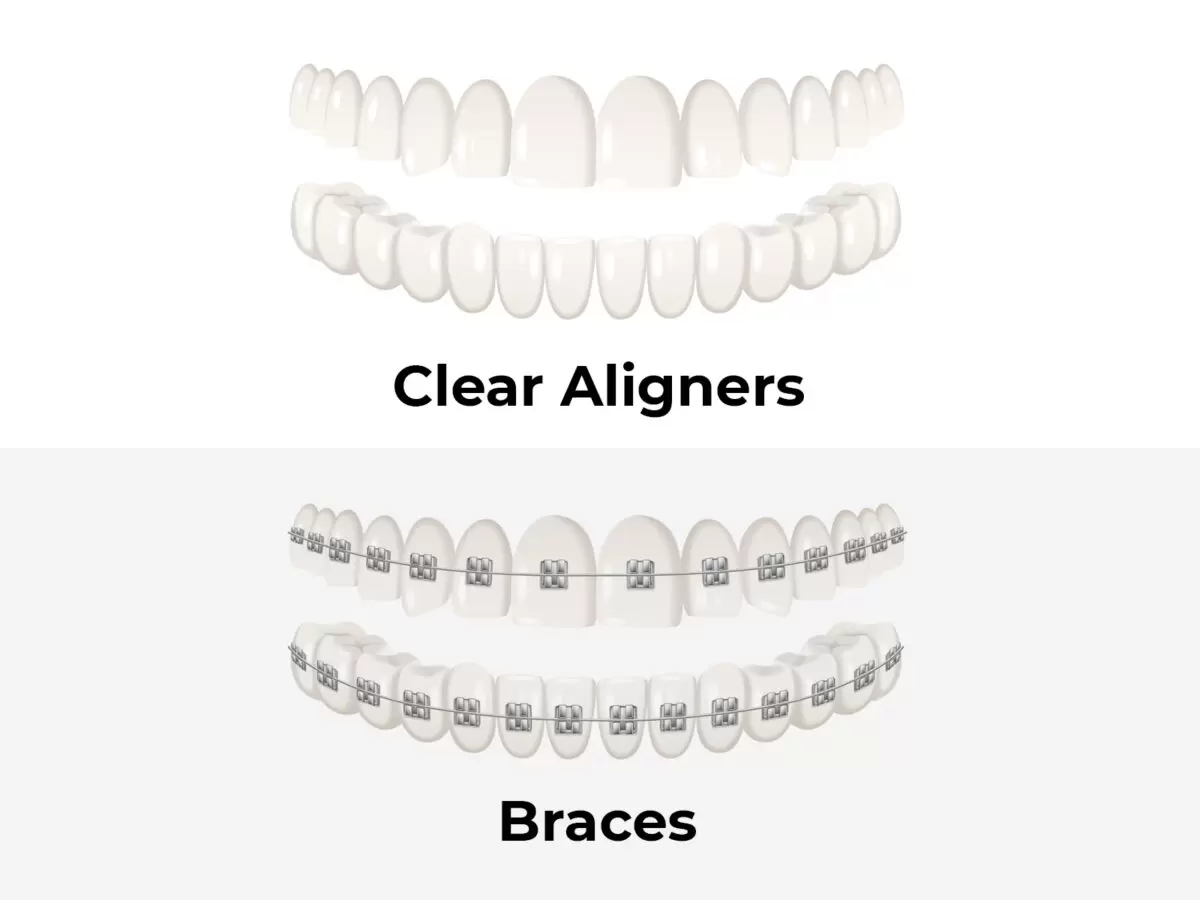Blog
Dental hygiene tips for healthy teeth & gums

Clear Braces Vs. Clear Aligners: What Is The Difference?
Orthodontic therapy has advanced tremendously, giving clients various options for achieving a straighter smile. Clear braces and aligners are two popular alternatives to traditional braces. While both seek to rectify tooth misalignment, they differ in design, mechanism, and overall strategy. This article examines the differences between transparent braces and clear aligners, highlighting the essential factors people should consider before beginning their orthodontic journey.
Traditional brackets and wires: The Traditional Approach.
- Design: Clear braces use materials that harmonize with the natural tooth color, providing a more discreet appearance than metal braces.
- Placement: Orthodontists install brackets to the front surfaces of the teeth and connect them with wires that provide moderate pressure to encourage tooth movement.
- Mechanism: Clear braces use a continuous adjustment, with the orthodontist regularly tightening the wires to gently reposition the teeth into the appropriate positions.
- Control: This approach provides fine control over tooth movement, making it suitable for difficult instances.
- Challenges in Oral Hygiene: Clear braces can lead to plaque and food particle accumulation due to their brackets and wires.
- Routine Maintenance: Extra care and dedication are essential when cleaning around brackets and cables to avoid deterioration and discoloration.
- Removability: Clear braces are non-removable by the patient. They remain attached to the teeth till the orthodontic treatment is completed.
- Continuous Correction: The presence of braces enables constant correction of tooth misalignment.
Clear aligners: The Modern Solution
- Design: Clear aligners are custom-made cleric trays that fit tightly over teeth. Aligners are nearly undetectable, making them a discreet orthodontic option that eliminates the need for visible brackets or wires.
- Mechanism: Clear aligners work in a progressive sequence, with each pair of trays gradually moving the teeth.
- Scheduled Changes: Patients transition to a new pair of aligners every few weeks, each getting to the ideal teeth alignment.
- Oral Hygiene: Clear aligners are removable, which is a considerable advantage. Easier.
- Cleaning: Patients can take their aligners out to eat, brush, and floss, making dental hygiene practices more simple and effective.
- Removability: Clear aligners are removable, making them convenient for eating, brushing teeth, and special events.
- Compliance-Dependent: The success of clear aligners depends on patient compliance in wearing them for the appropriate number of hours per day.
Choosing between clear braces and clear aligners:
- Treatment Complexity: Clear braces effectively treat complex orthodontic issues like severe misalignments and biting abnormalities. Ideal for mild to moderate misalignments, they often produce excellent outcomes.
- Appearance Preference: Clear braces are a more inconspicuous option than regular metal braces, but they remain visible on the teeth. Clear aligners are virtually invisible, making them an aesthetically acceptable option for people concerned about the appearance of orthodontic appliances.
- Oral Hygiene Considerations: Clear braces necessitate precise dental hygiene habits to avoid plaque accumulation around brackets and wires. Clear aligners make it easier to maintain good dental hygiene because they can be removed for cleaning.
- Lifestyle and Convenience: Clear braces are non-removable and provide ongoing correction. However, they may offer obstacles to activities like musical instruments or contact sports. Clear aligners are removable, providing additional flexibility and ease for daily activities.
- Compliance and Responsibilities: Clear braces are permanently affixed to the teeth; therefore, they do not require patient cooperation. To be effective, patients must wear them for the required number of hours every day.
Conclusion:
Individual preferences, treatment needs, and lifestyle concerns all play a role in determining whether to use clear braces or aligners. Clear braces are a conventional but discrete alternative for more challenging cases, whereas clear aligners are a modern, nearly invisible treatment that prioritizes and eases maintenance. Consulting with an orthodontist is critical for determining the best treatment method, considering desired outcomes, oral health concerns, and personal preferences. Both are effective ways to attain a straighter, more confident smile.
